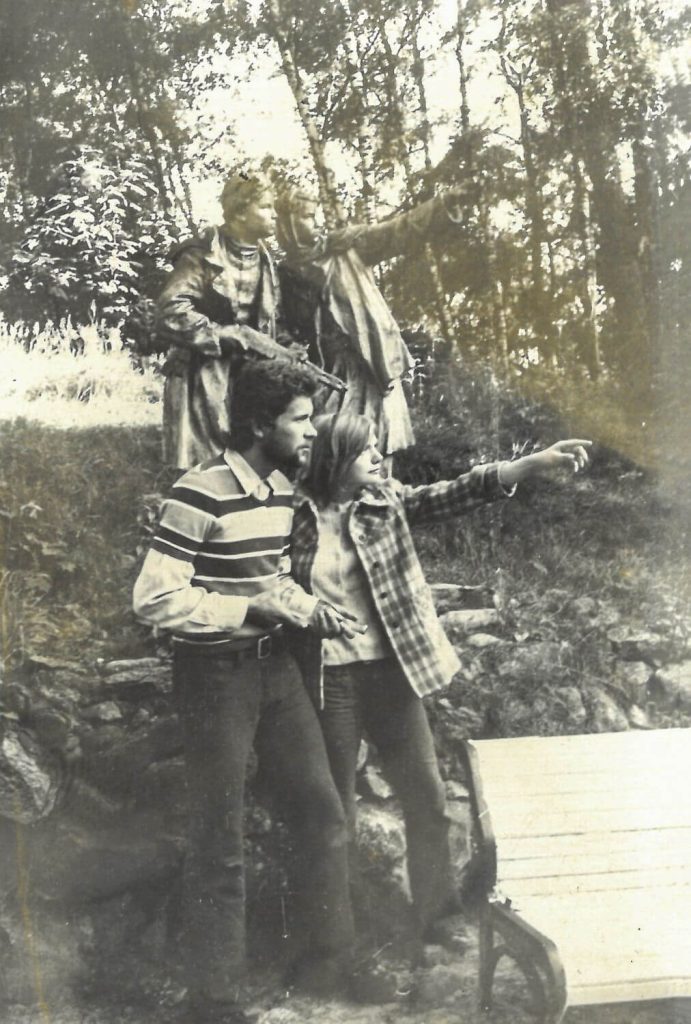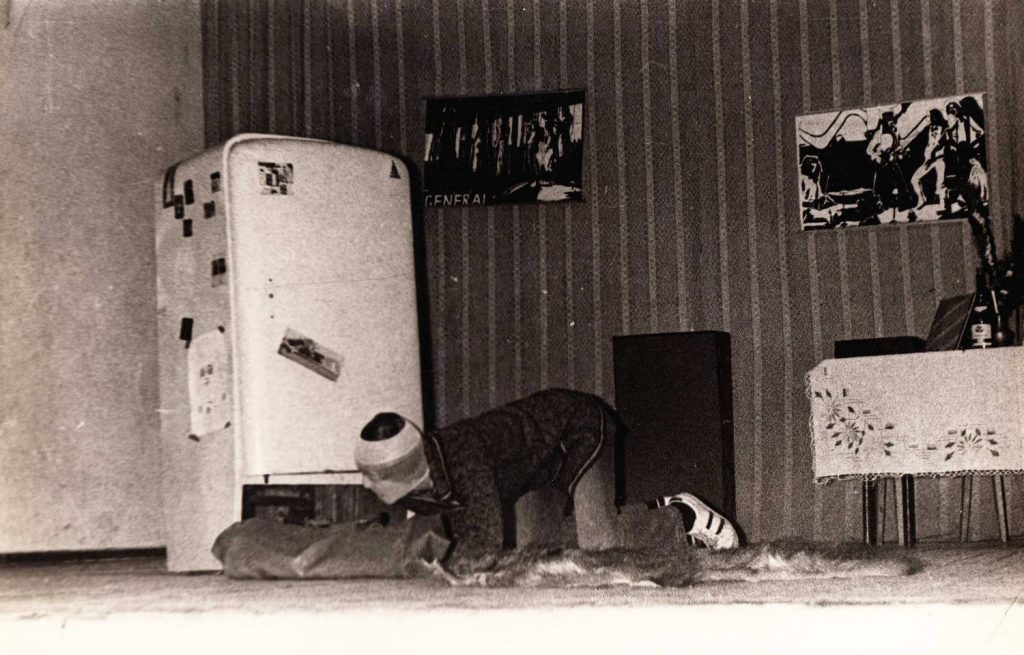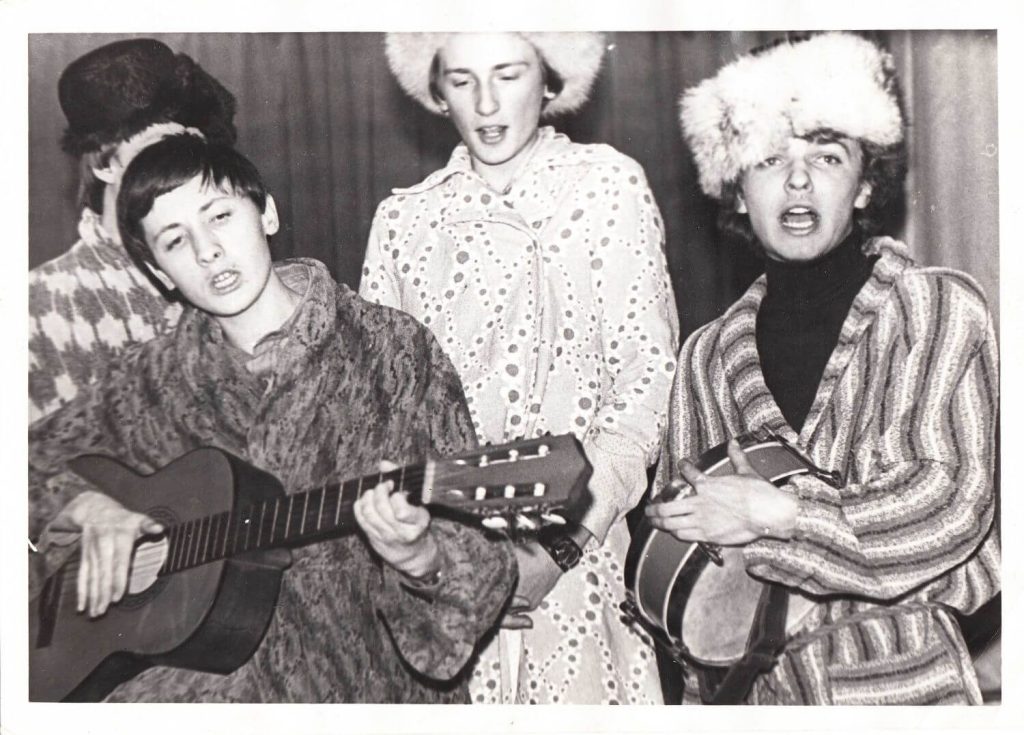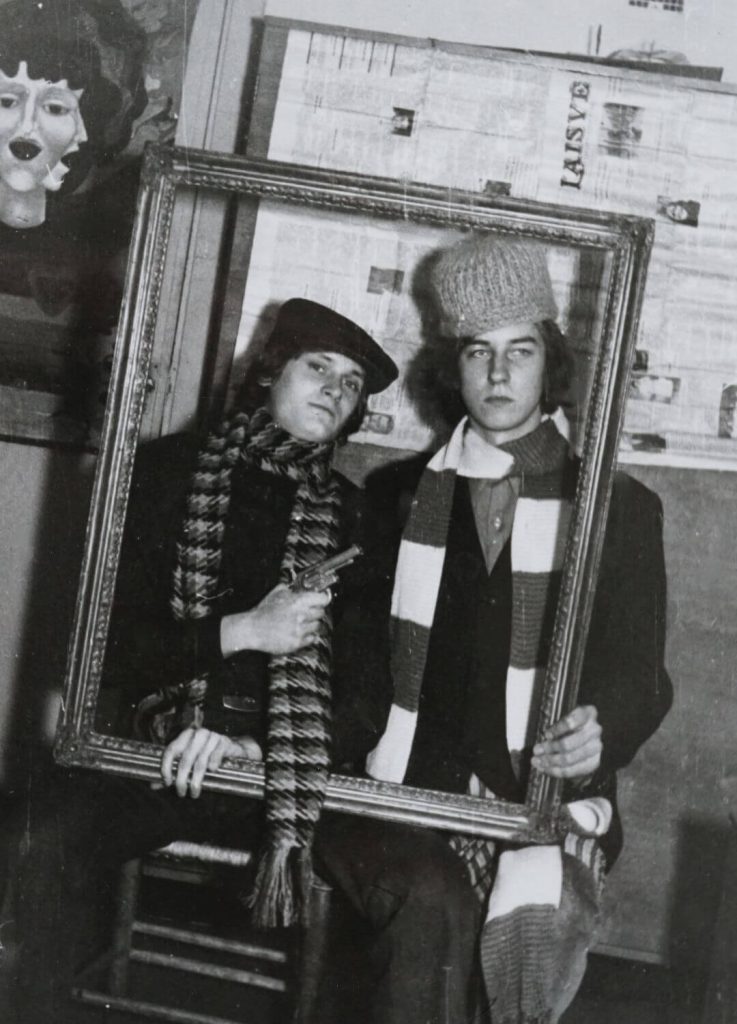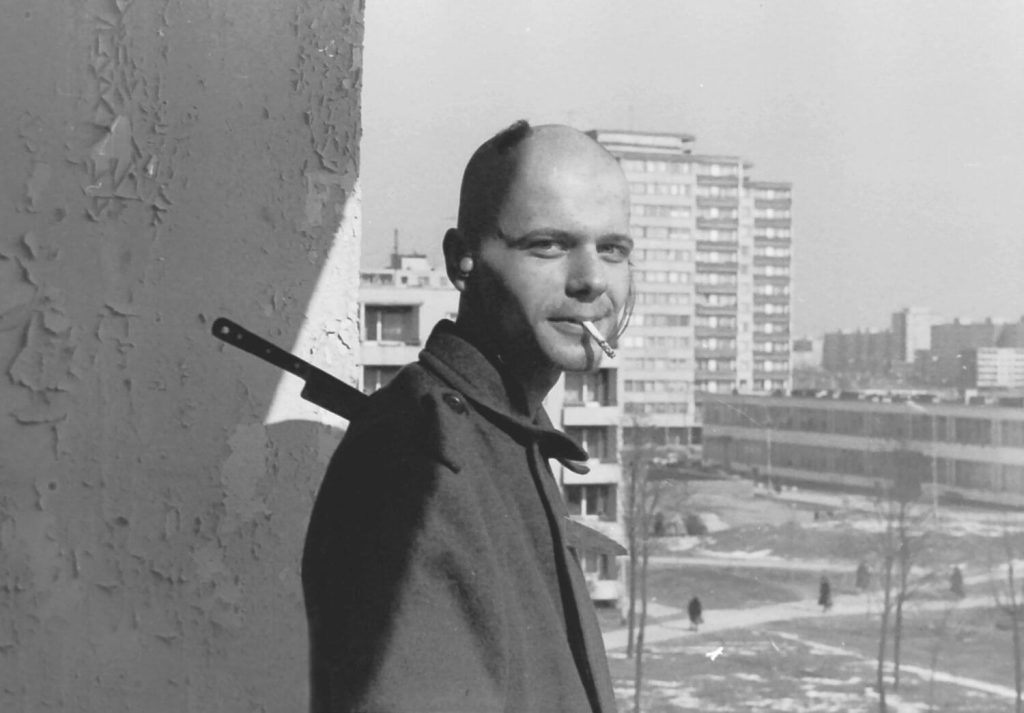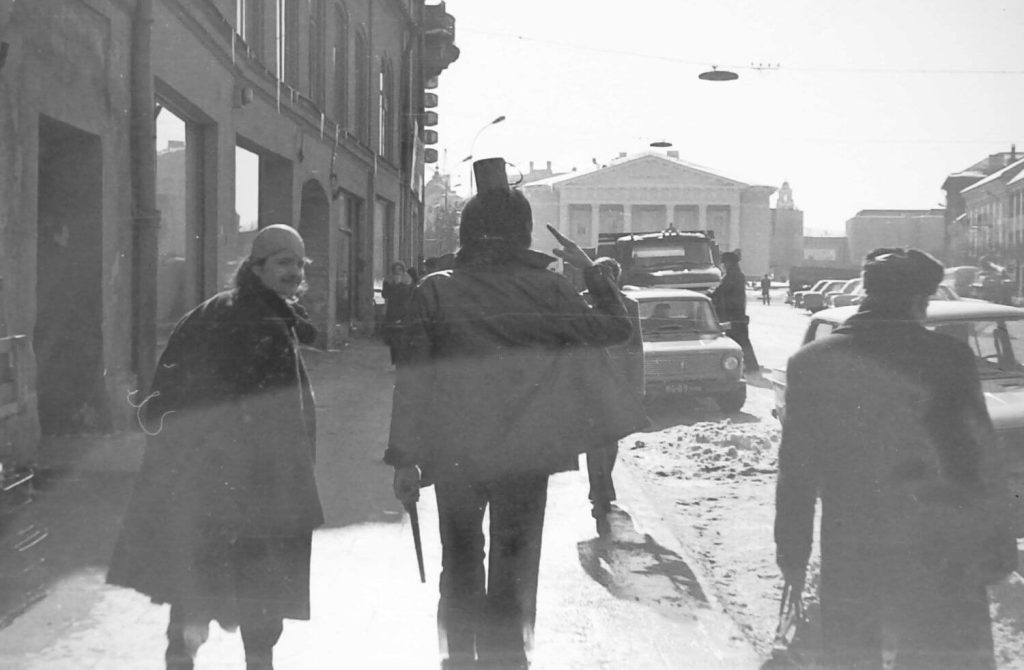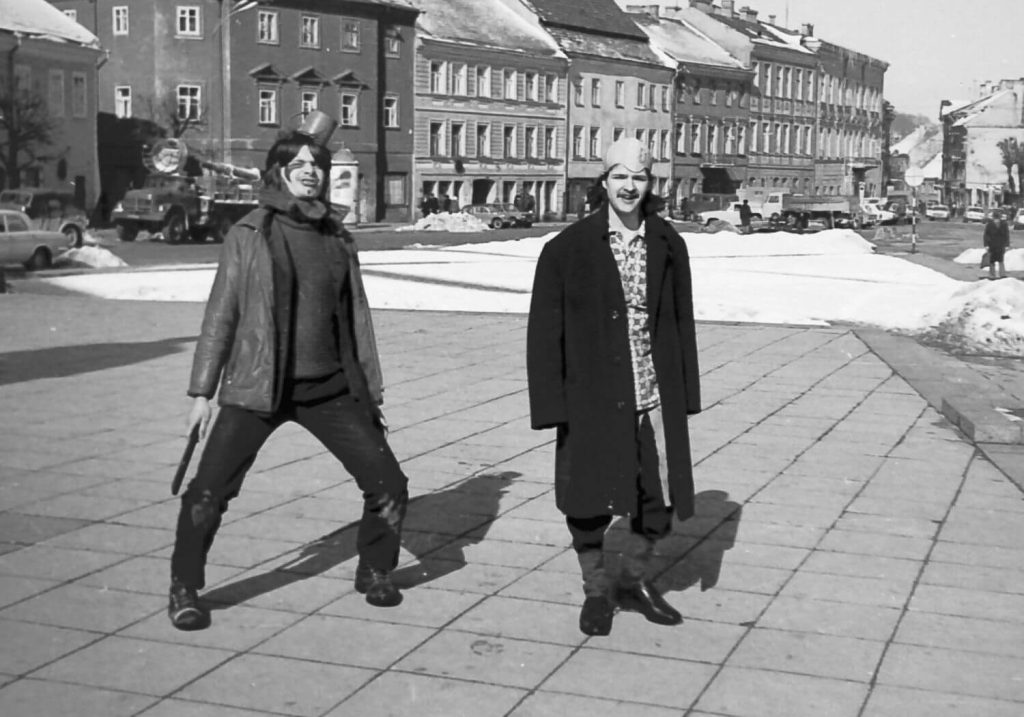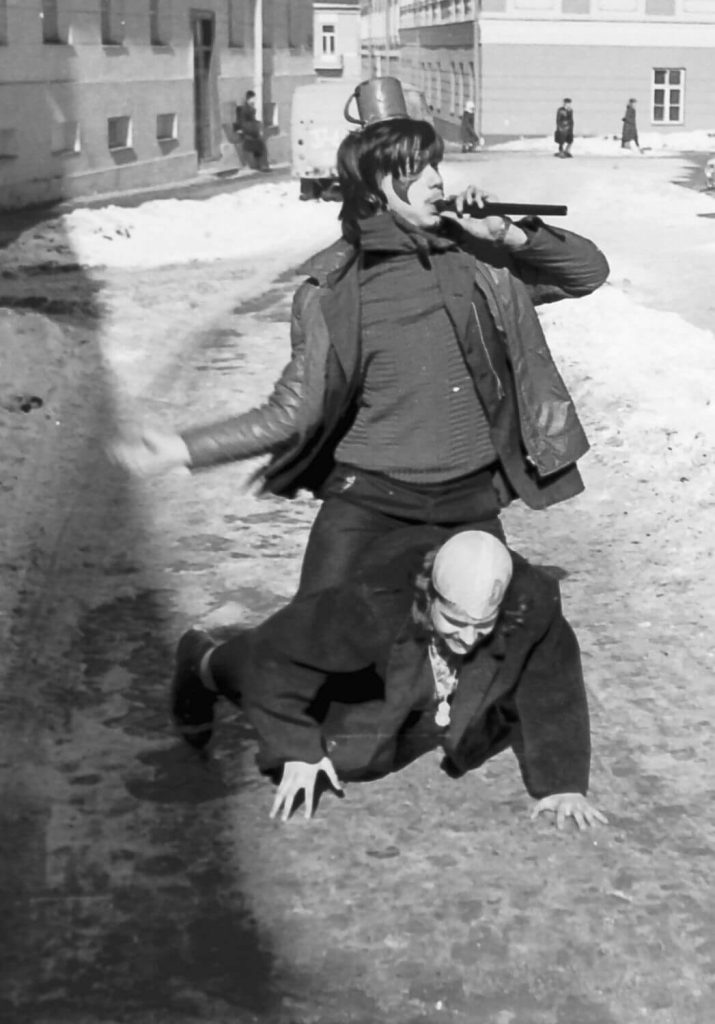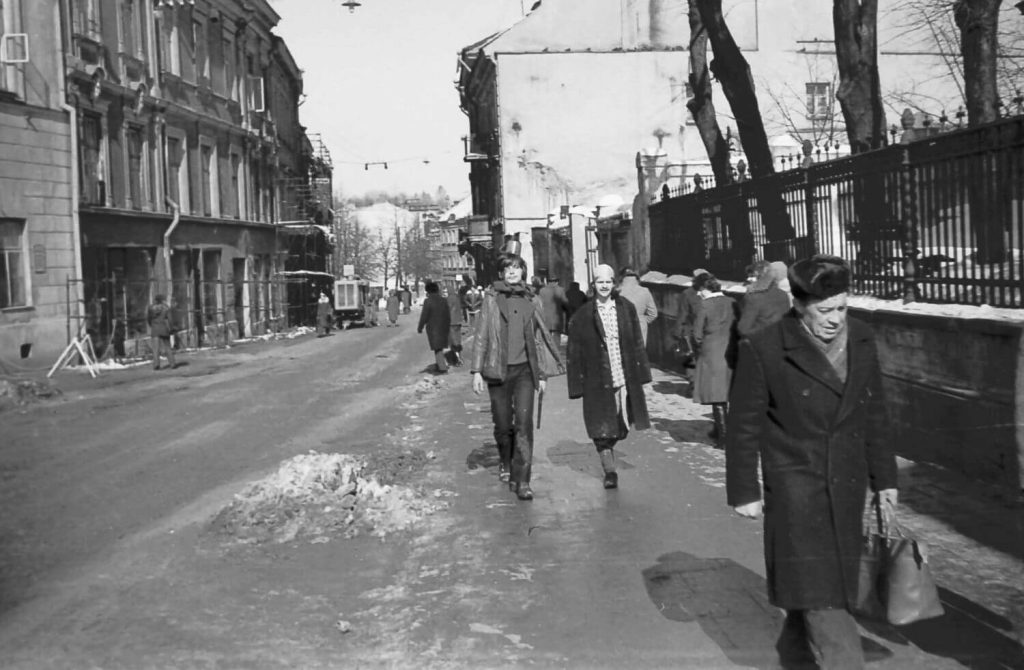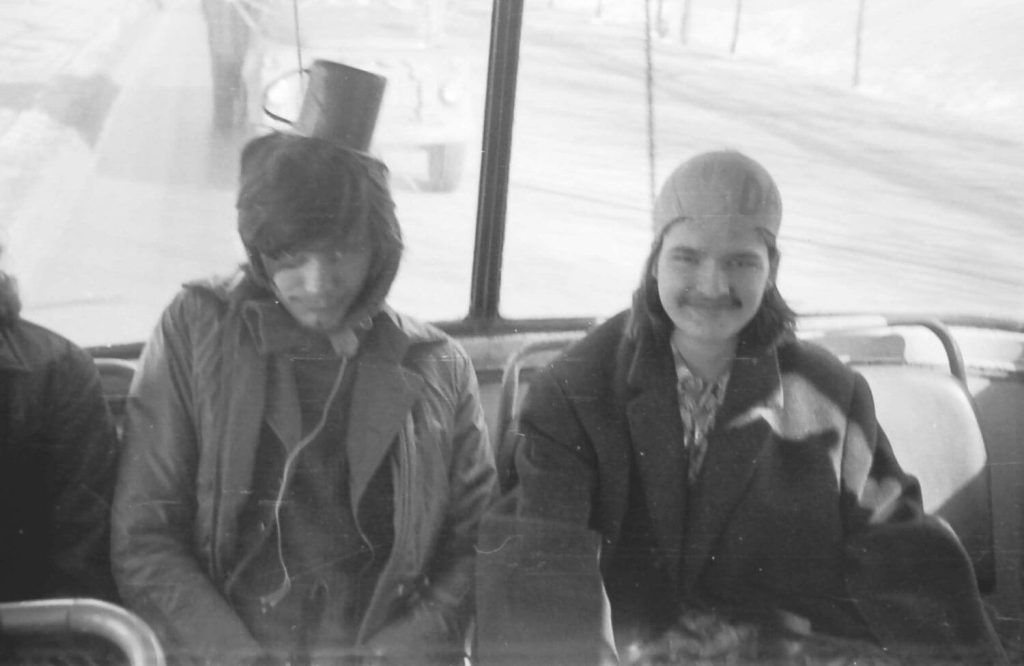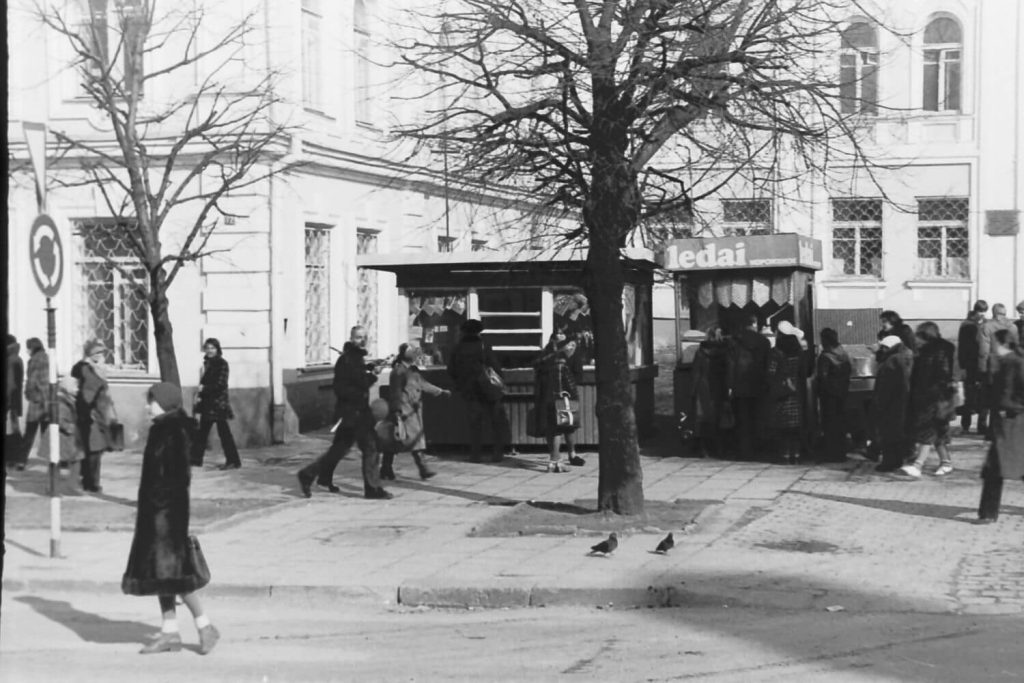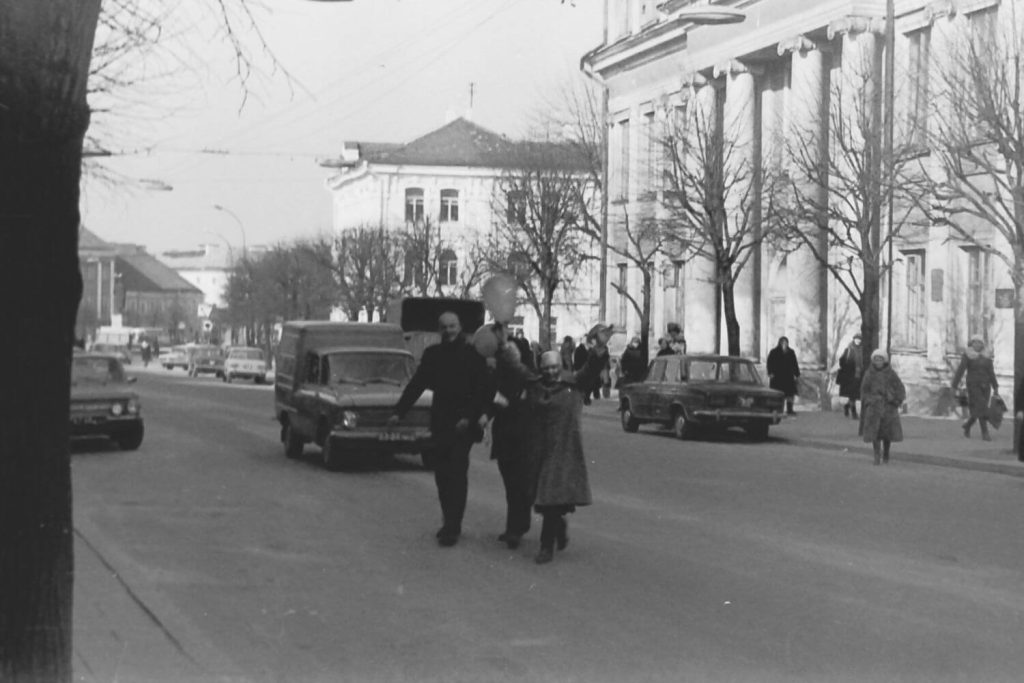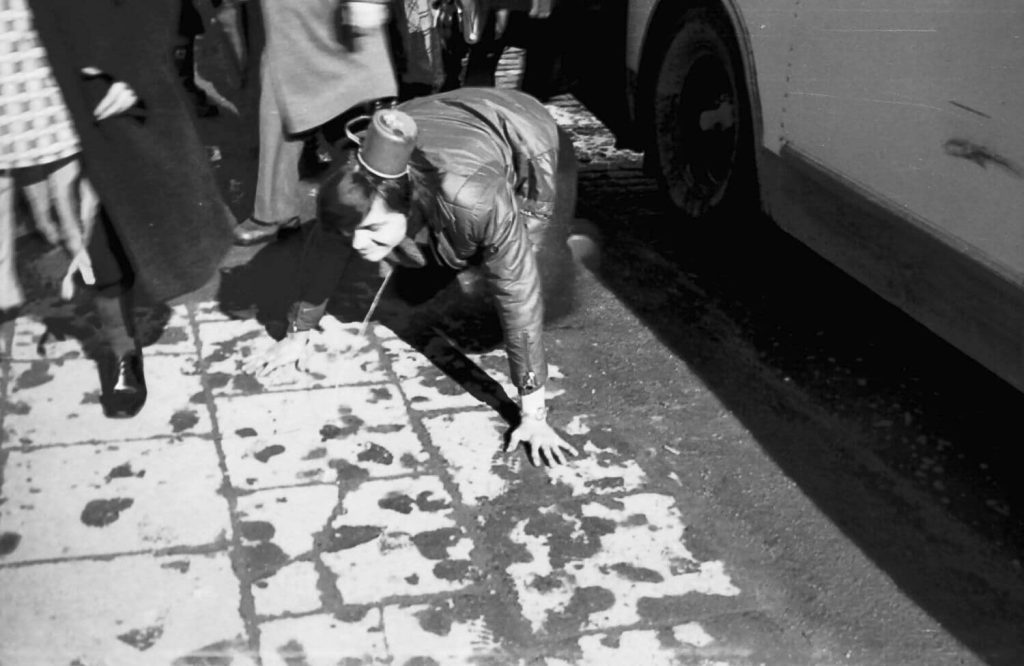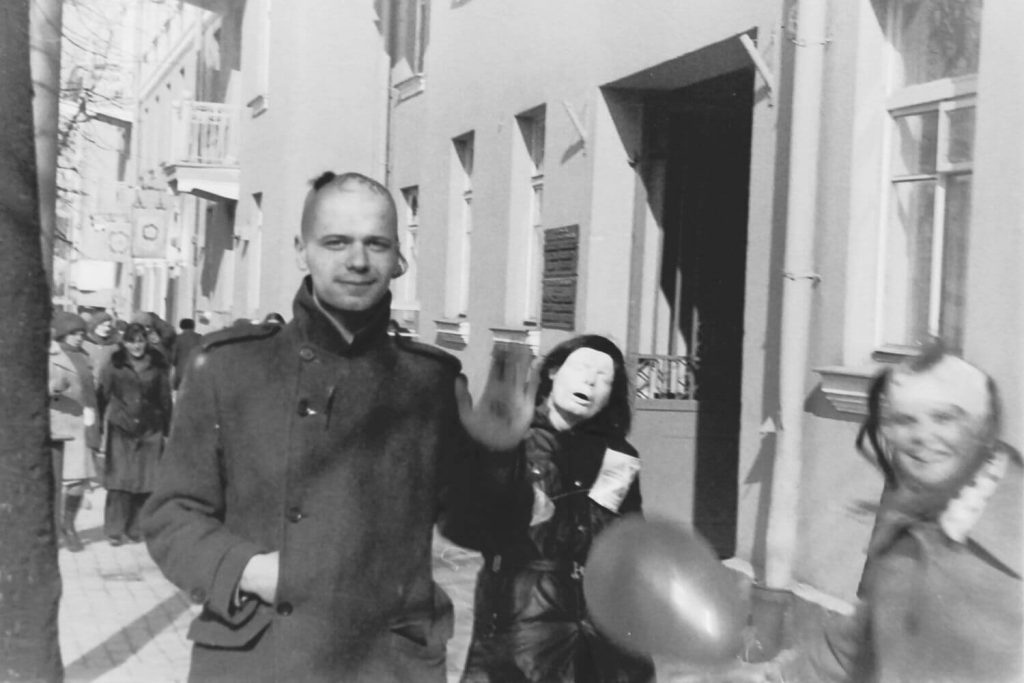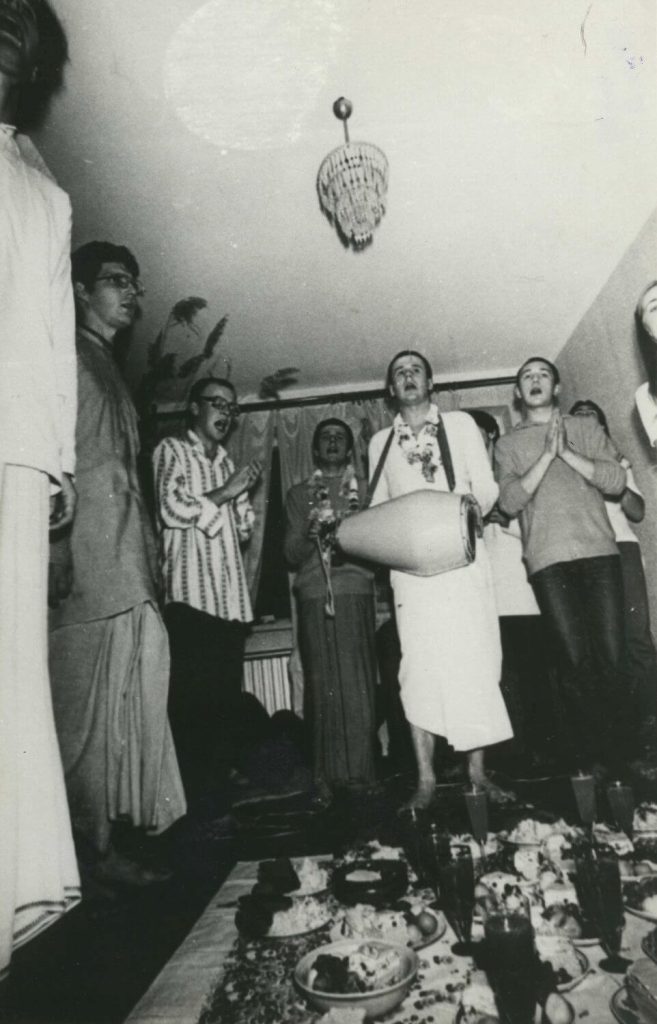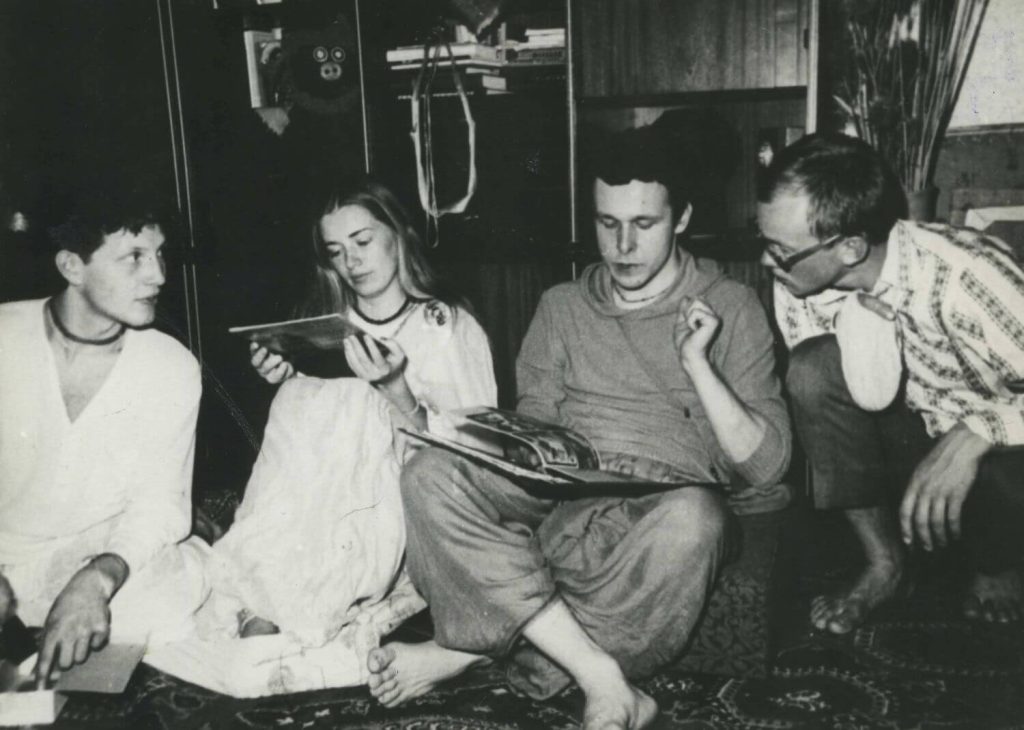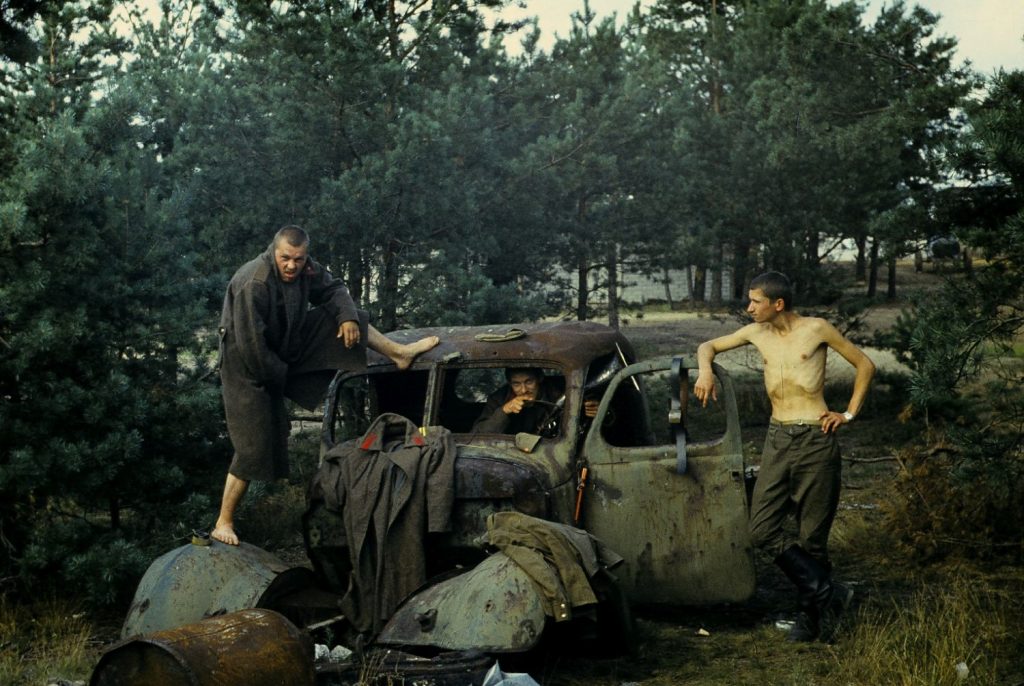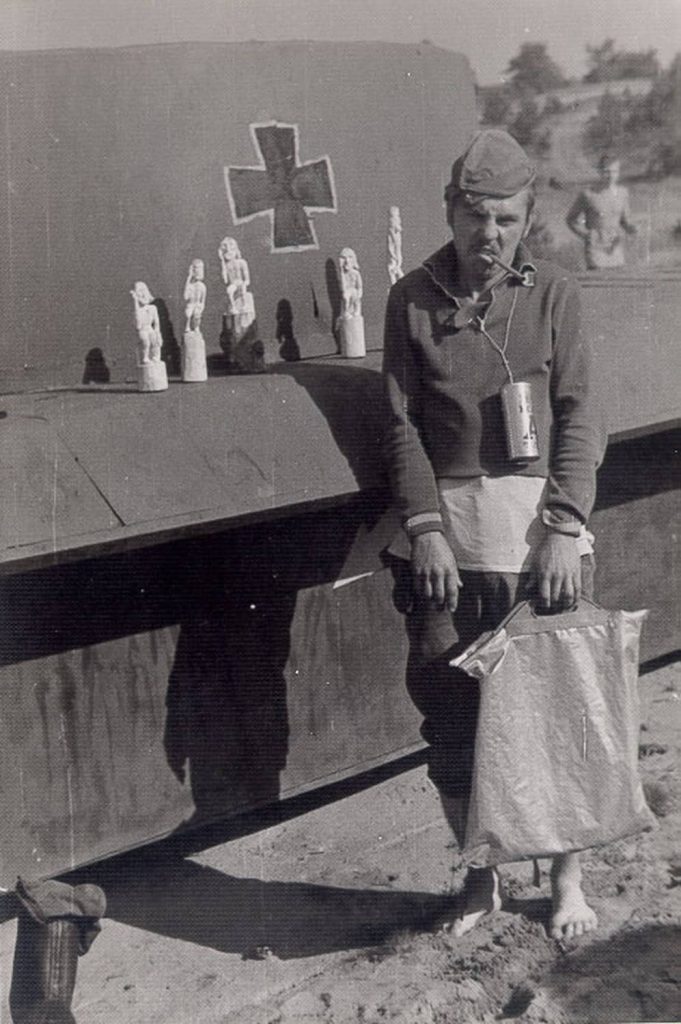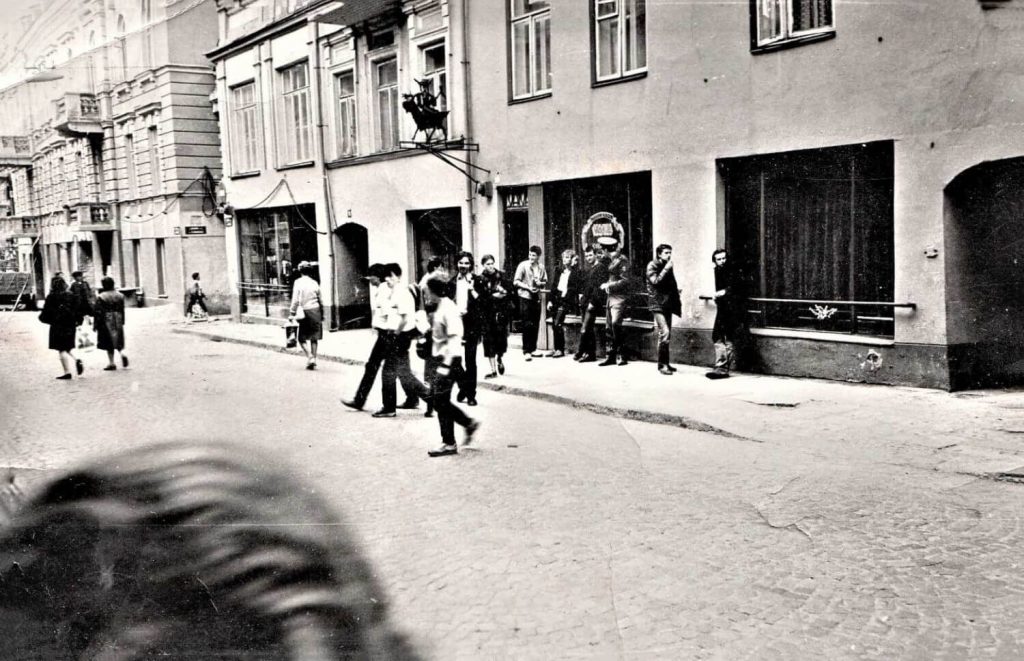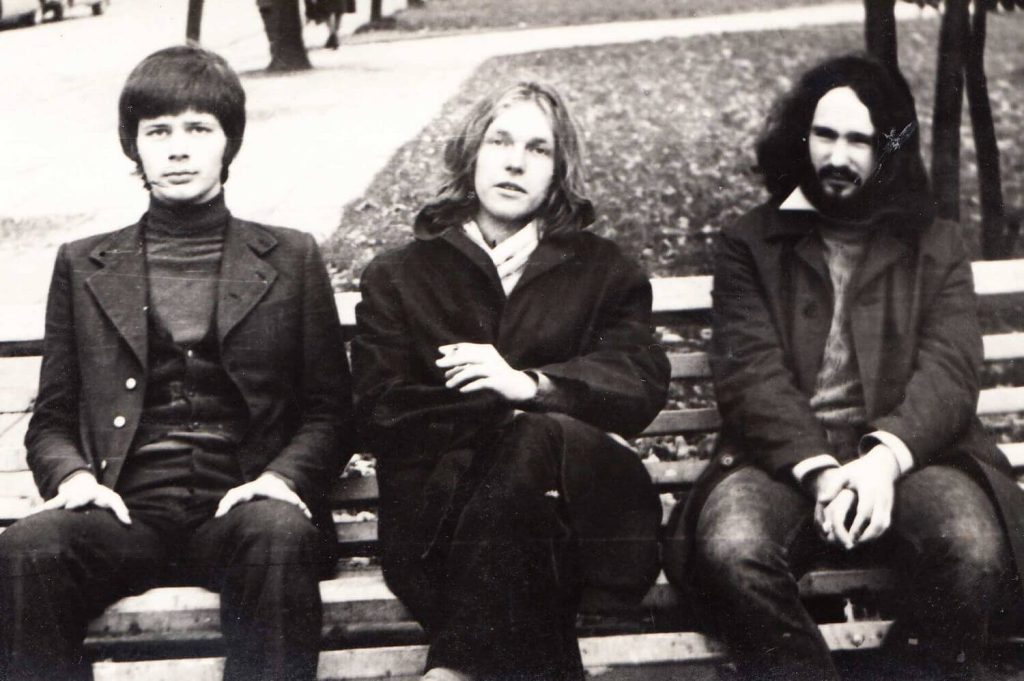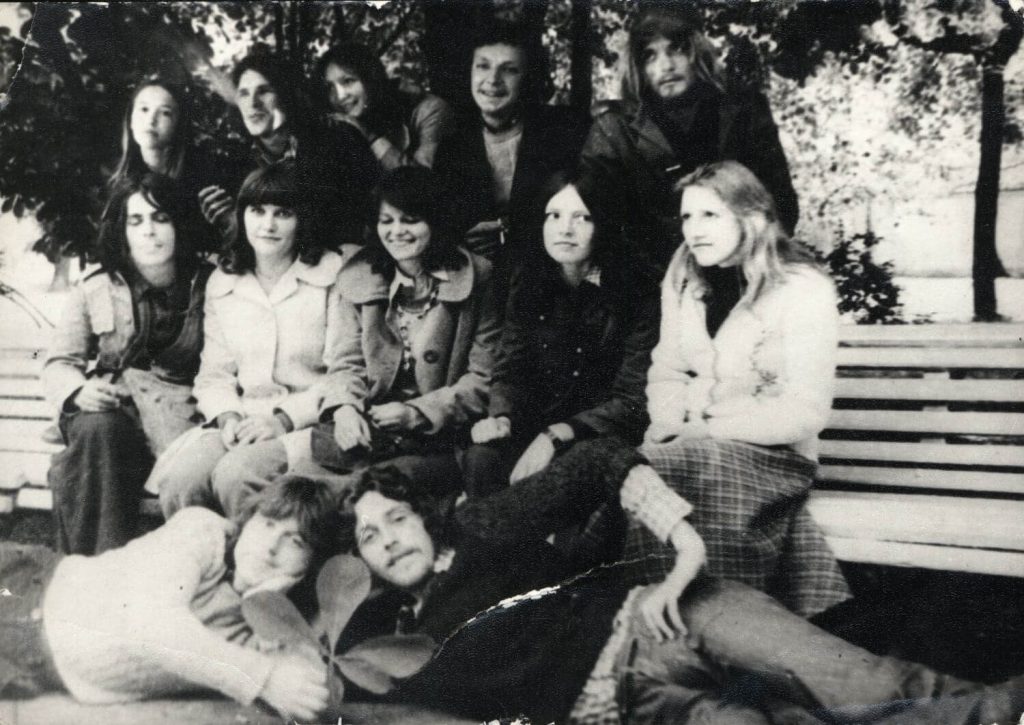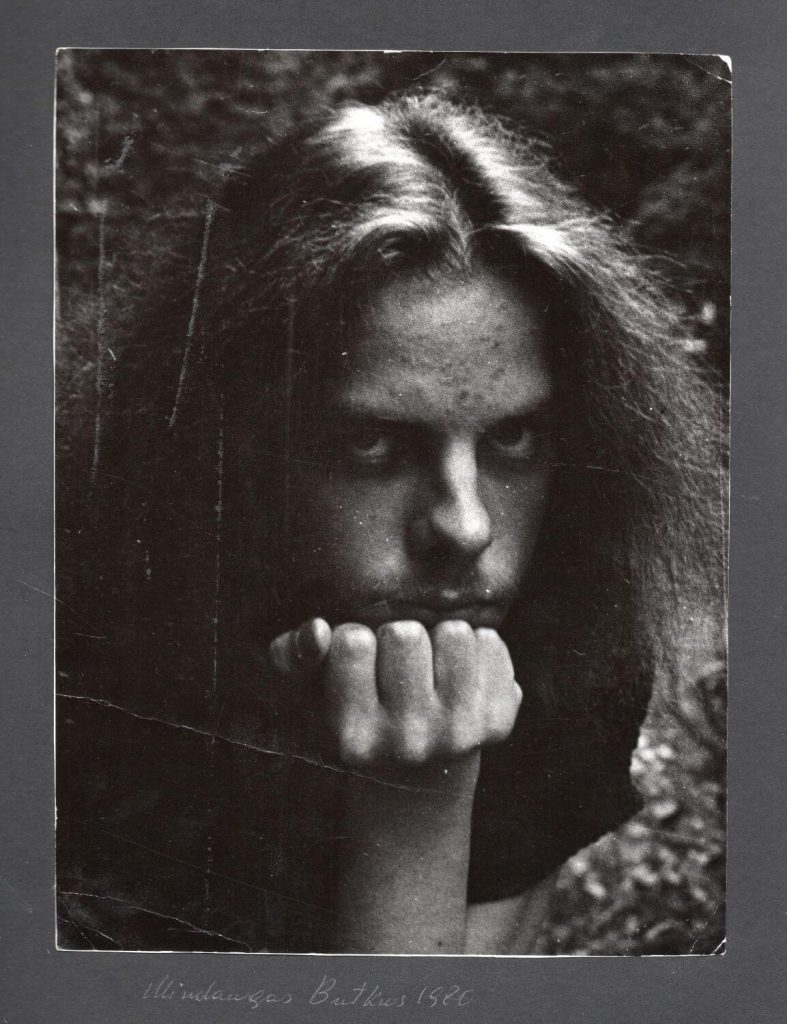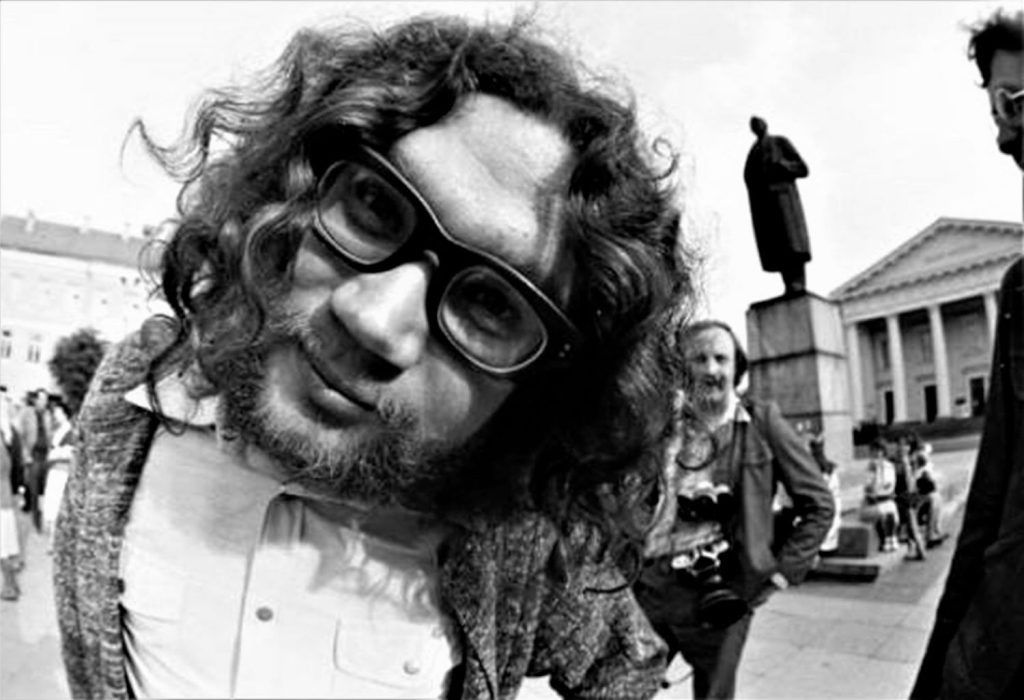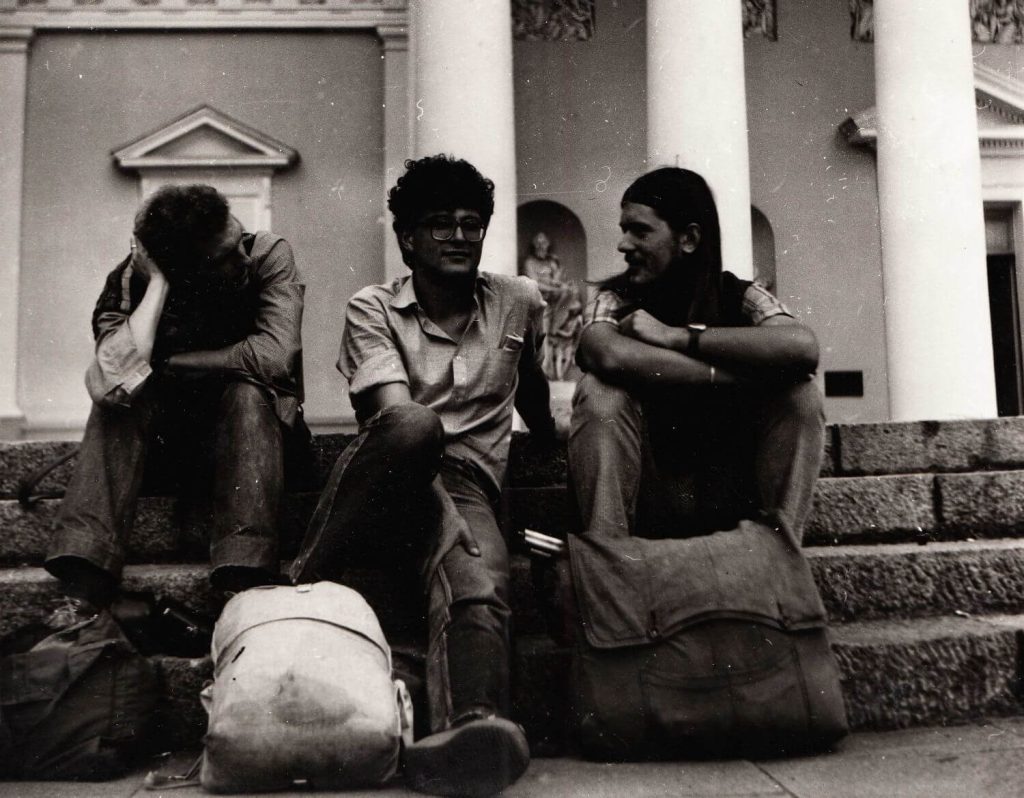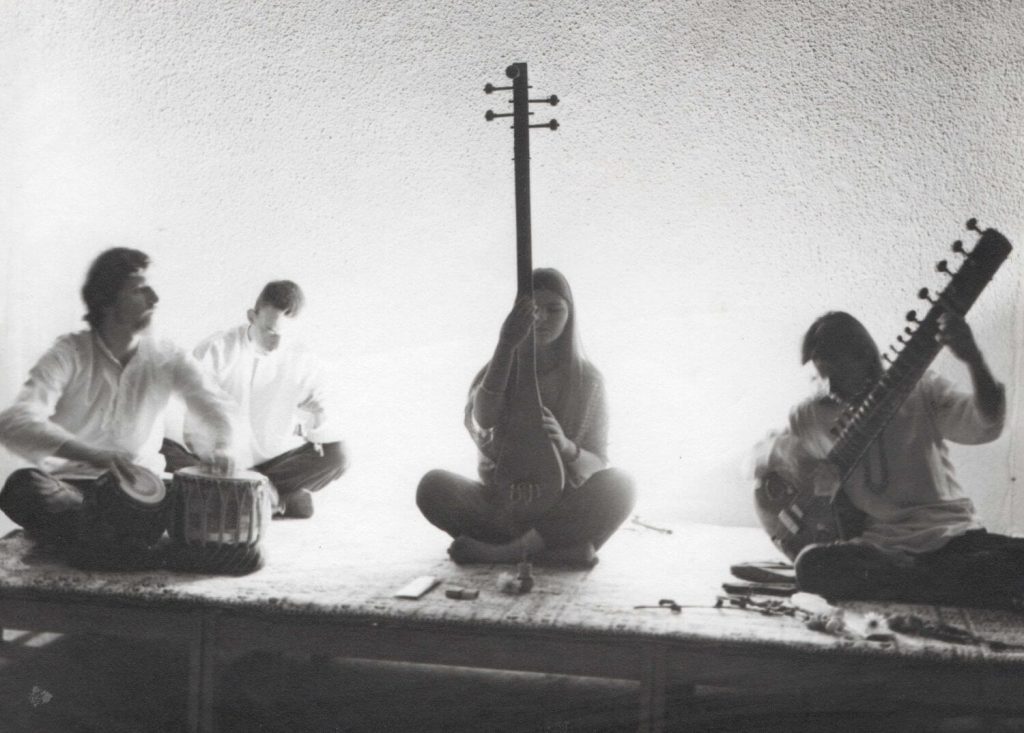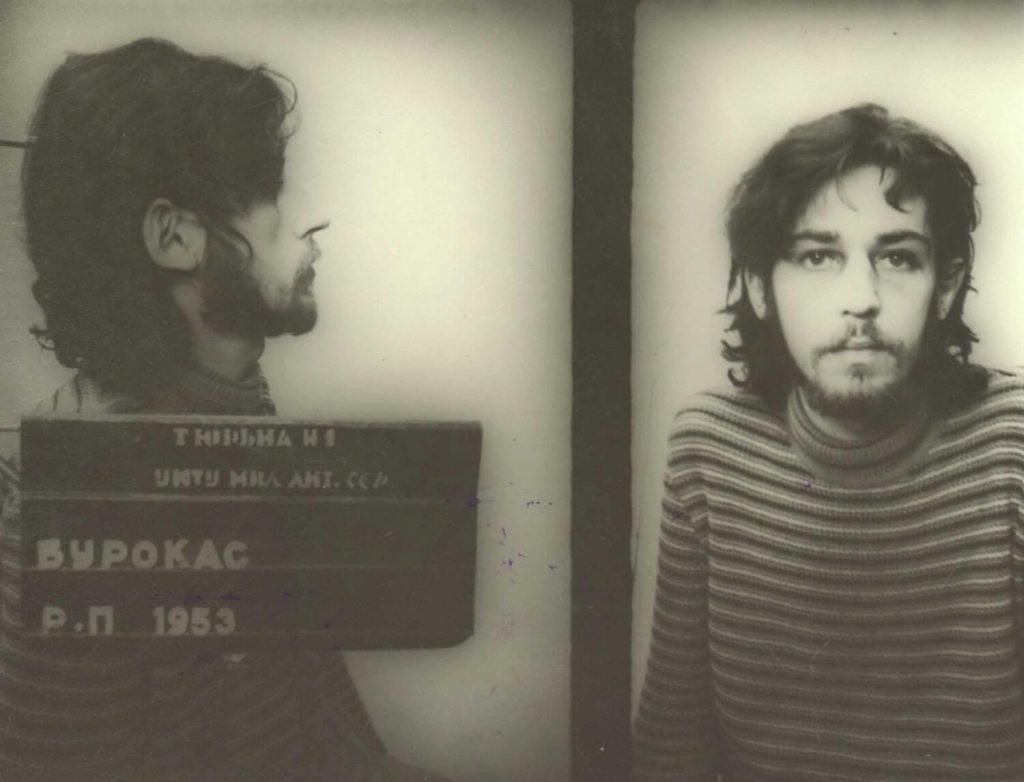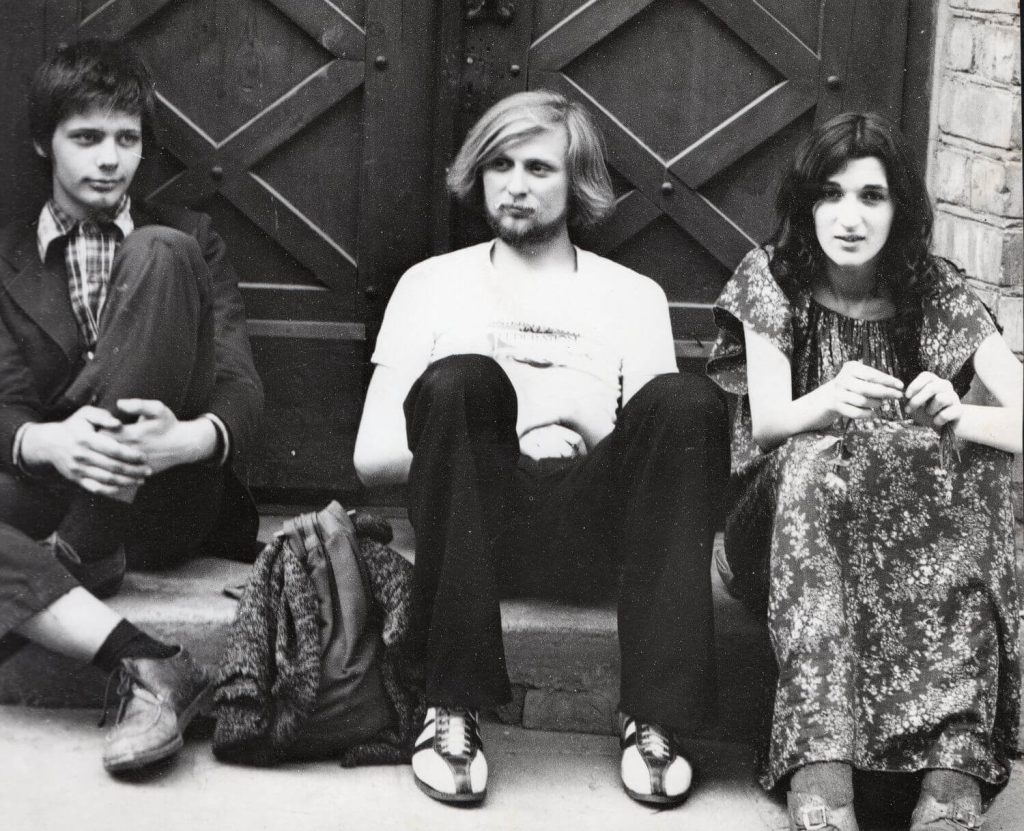The Rebellion of Youth (1964–1991)
Aesthetics
Hippie and pioneer of Lithuanian underground rock culture Alvitas Taunys-Guru (1949–1979) and his wife Dangė Širvytė, daughter of the poet Pauliaus Širvys, mimicking the socialist realism Soviet partisans sculpture. Taunys was one of the organisers of the rock festival at the Žirmūnai restaurant in Vilnius that was held on 26 April 1970 and was the first of its kind in Lithuania. He was expelled from the Vilnius Civil Engineering Institute for two years. He died in 1979 under suspicious circumstances.
Occupied Lithuania, 1970s. Photo author unknown (personal archive of Arūnė Taunytė)
The Modris Tenisons Pantomime Theatre Troupe (1966–1972) that was put together at the Kaunas Drama and Music Theatre captivated local hippies. Young people listened with fascination to the thoughts of the Latvian director about art and philosophy. A few of them started attending pantomime courses. In interacting with young people, the talented director got new ideas and learned to think freely. Pantomime spread at student dances, in the whirlwinds of frolicking youth. Modris’s student and friend, Raganiai (“The Withes”) drummer Natanas Gitkindas, roused the audience by pushing the partitions of the hall as if he was trying to tear down the Berlin Wall. Professional culture intertwined with street culture, and they influenced one another. At the end of the 1970s, during a performance of Light of Happiness at the Vilnius Palace of Culture of Trade Unions by a theatre group founded by actress Valerija Marcinkevičiūtė-Karalienė, verses from Jonas Biliūnas’s poem “Dream” were recited: “Will the Fatherland awaken, will there come a time when darkness, sorcery and slavery will perish?” Not long after, the KGB interrogated the managers of the theatre where Gediminas Storpirštis – who was still in school at the time – was acting. The military men reprimanded them for the “nationalist” poetry recited in the play. It was explained to them that these verses were printed in Soviet Lithuania, in a multi-volume collection Writings by Jonas Biliūnas. In 1973, some students at the Klaipėda Conservatory were almost thrown out of school for a performance they gave for International Women’s Day based on Sergei Yesenin’s poem “The Bitch”.
Gitenis Umbrasas on the balcony of a Soviet apartment block, just before the March 13 celebration of Cockroach Day – a happening organized by Gitenis and his friends in the streets of Vilnius Old Town as a theatrical protest against the dullness of everyday life. For his role, the artist sewed a wooden board with a cut and a broken knife handle onto the back of a military overcoat, and placed another slit with the knife’s tip protruding from the chest. He shaved his head, leaving a few lonely braids – creating the perfect image of a “žertva” (victim) of the era.
Vilnius, early 1980s. Photo author unknown (personal archive of Gitenis Umbrasas)
Like around the world, interest in Eastern culture gained momentum in Lithuania. In 1967, the Friends of India Society was founded, which connected its activities with Baltic heritage research. Young hippies hitchhiked to the Buddhist monasteries in Buryatia. That was where Algirdas Kugevičius began to study the Tibetan language and spiritual teachings in 1979. Kugevičius later became a professional translator who translated Tibetan philosophical works. In the 1980s, Anatolijus Lomonosovas started the Indian classical music ensemble Svara in Lithuania. In 1987, as the USSR was collapsing, the colourful Hare Krishnas took to the streets of Vilnius with their mantras and chants.
In the early 1980s, artist Gitenis Umbrasas, together with friends, organized happenings in the streets of Vilnius Old Town each spring – theatrical protests against the grey everyday life. They celebrated March 13 as Cockroach Day.
Vilnius, 13 March 1982. Photo author unknown (personal archive of Gitenis Umbrasas)
Participants of the Cockroach Day happening in a Vilnius trolleybus. On the right – Kazimieras Seibutis. This form of cheerful rebellion often ended on a grim note: participants were seized by the militia, taken to detention, fingerprinted, and sometimes locked in psychiatric wards, where, tied to beds, they were injected with aminazine by psychiatrists.
Vilnius, 13 March 1982. Photo author unknown (personal archive of Gitenis Umbrasas)
A scene from the Cockroach Day celebration – several participants walk past a newsstand. On that day, among piles of dirty snow, the decaying walls of Soviet-era buildings, the gray sidewalks, and the shadowy faces of pale, unsmiling passersby, colorful, unusually dressed, and jubilant characters would appear like a dream.
Vilnius, 13 March 1982. Photo author unknown (personal archive of Gitenis Umbrasas)
A “cockroach” crawling along a Vilnius sidewalk. In the early 1980s, artist Gitenis Umbrasas and his friends organized happenings in the spring streets of Vilnius Old Town – theatrical protests against the grey routine – celebrating Cockroach Day on March 13. Passersby, upon seeing the strange youth, would gape and freeze in astonishment. The fun was cut short by the militia, who arrested the troublemakers and took them to psychiatric institutions. In terms of health or career, this form of rebellion was nearly suicidal.
Vilnius, 13 March 1982. Photo author unknown (personal archive of Gitenis Umbrasas)
Hippie-style Vilnius youth with guests from Latvia and Estonia. In the front row on the right lies poet Raimundas (Rimas) Burokas (1953–1980), a free spirit of the Old Town who died in 1980 at the Lukiškės Prison hospital. In the second row, third from the left – his wife Silvija Vilytė-Burokienė. In the third row, fourth from the left – poet Edmondas Kelmickas.
Vilnius, 1975–1979. Photo author unknown (Lithuanian Special Archives)
In 1983, Anatolijus Lomonosovas started the Indian classical music ensemble Svara in Lithuania. From left: Rytis Kamičaitis (tabla), Valentinas Zaikinas (bell), Jovita Povilaitė (tanpura), Anatolijus Lomonosovas (sitar).
Vilnius, 1984. Photo by Vasilijus Degteriovas (personal archive of Gitenis Umbrasas)
Free-spirited Vilnius youth on the doorstep of the LSSR Writers’ Union bookstore. From left: artist Gitenis Umbrasas, freethinker Liutauras Kazakevičius. When applying to the LSSR State Art Institute, Gitenis failed the loyalty exam organized by the committee because, unable to endure the compositional assignment “40 Years of the Komsomol”, he instead painted a portrait of John the Baptist. Liutauras used to read Bible passages aloud in Vilnius cafés, disturbing the townspeople who gathered for lunch.
Vilnius, 1978. Photo author unknown (personal archive of Gitenis Umbrasas)
